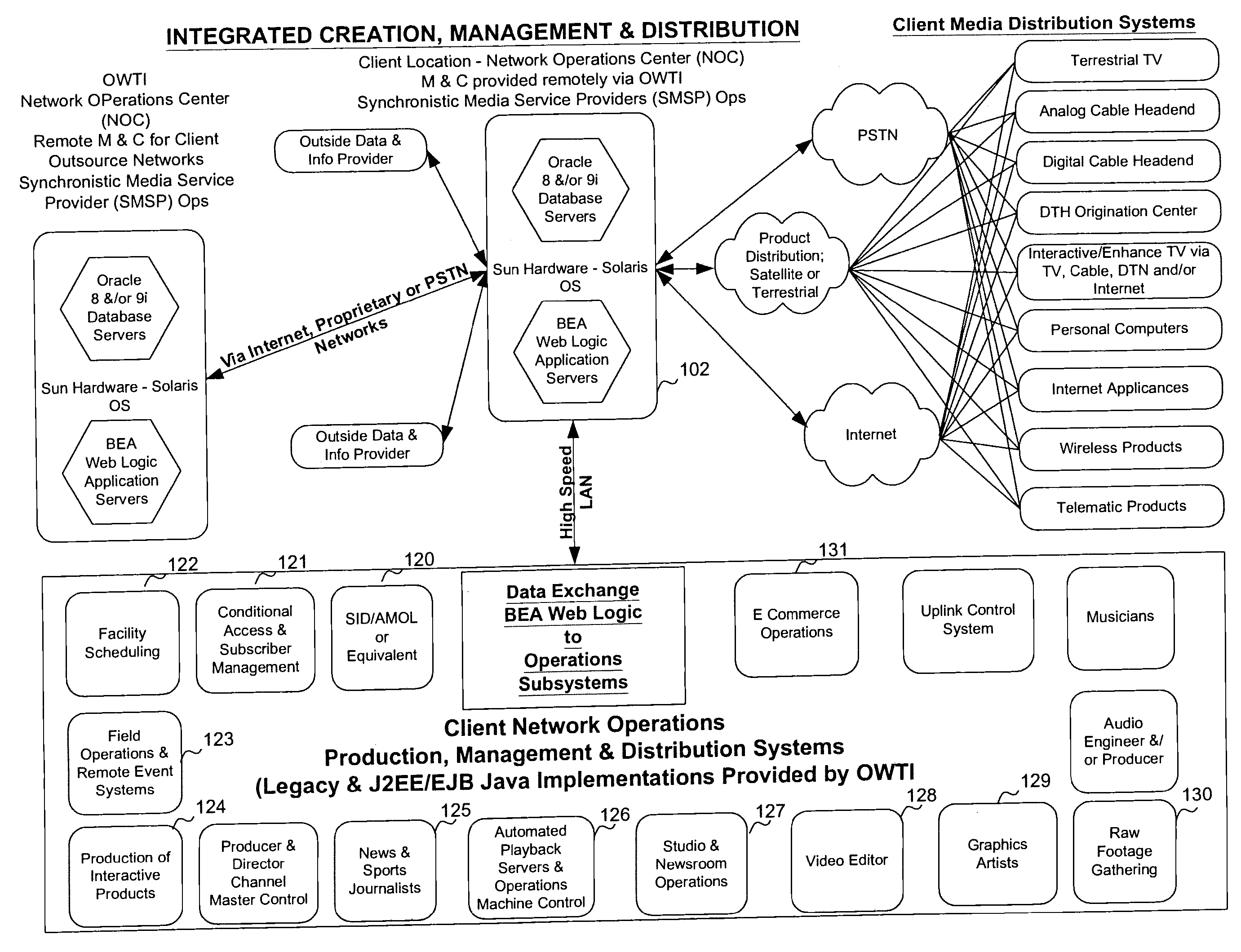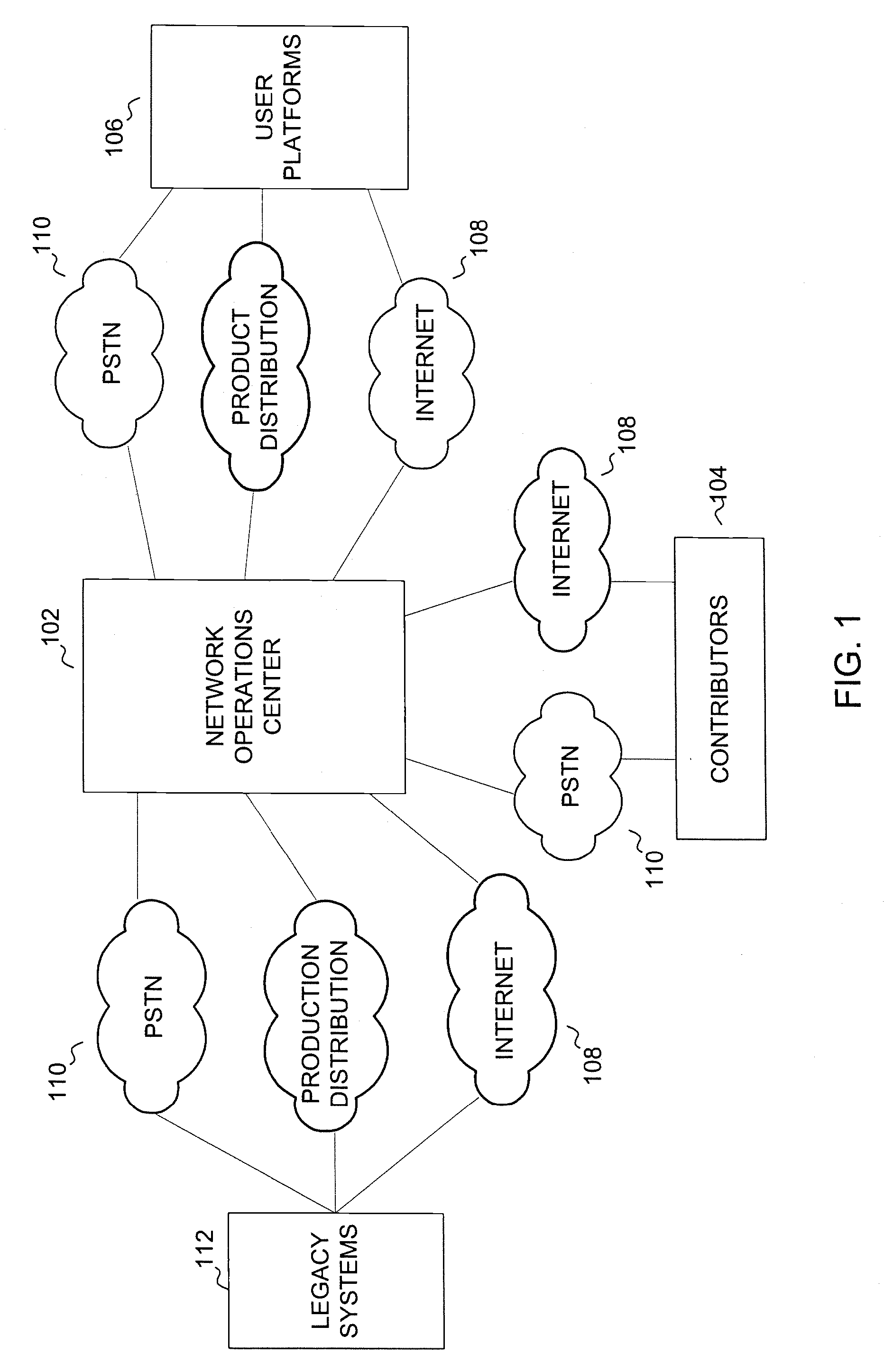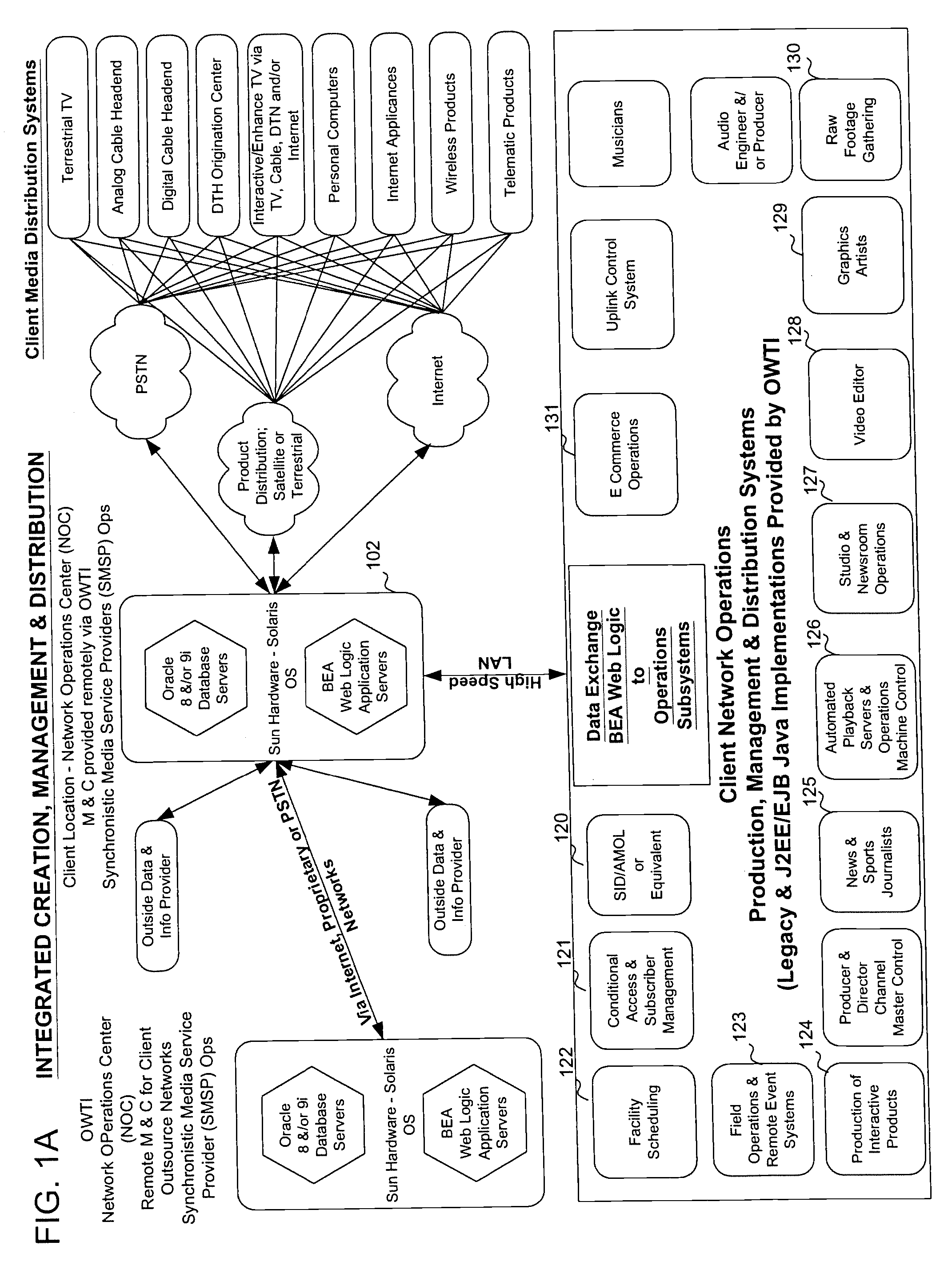System and method for collaborative, peer-to-peer creation, management & synchronous, multi-platform distribution of profile-specified media objects
a technology of media objects and management methods, applied in the field of media objects creation, management and distribution, can solve the problems of complex and expensive replacement, the inability to integrate with other systems and/or scale, and the inability to develop such systems and/or applications. to achieve the effect of easy scalabl
- Summary
- Abstract
- Description
- Claims
- Application Information
AI Technical Summary
Benefits of technology
Problems solved by technology
Method used
Image
Examples
Embodiment Construction
[0038]FIG. 1 is a schematic diagram illustrating an embodiment of the present invention. A network operations center (NOC) 102 coordinates and organizes communication between contributors 104, users 106 and media clients 112. This communication can occur over the Internet 108 or the PSTN 110. Any other communication medium can be used for communicating requests and responses including satellite-based communications.
[0039] NOC 102 is preferably a best-of-breed data center consisting of a fault tolerant, clusterable multi-processor hardware platform running a UNIX type operating system (OS) such as Sun Solaris, Linux or BSD with a “best of breed” database and middleware such as Oracle 9i and BEA System's Weblogic, respectively that provides appropriate interfacing and connectivity to media legacy systems 112, machine control and equipment such as provided by contributors 104. As such, NOC 102 is preferably an Open standards Unix type system utilizing a J2EE environment running a best...
PUM
 Login to View More
Login to View More Abstract
Description
Claims
Application Information
 Login to View More
Login to View More - R&D
- Intellectual Property
- Life Sciences
- Materials
- Tech Scout
- Unparalleled Data Quality
- Higher Quality Content
- 60% Fewer Hallucinations
Browse by: Latest US Patents, China's latest patents, Technical Efficacy Thesaurus, Application Domain, Technology Topic, Popular Technical Reports.
© 2025 PatSnap. All rights reserved.Legal|Privacy policy|Modern Slavery Act Transparency Statement|Sitemap|About US| Contact US: help@patsnap.com



